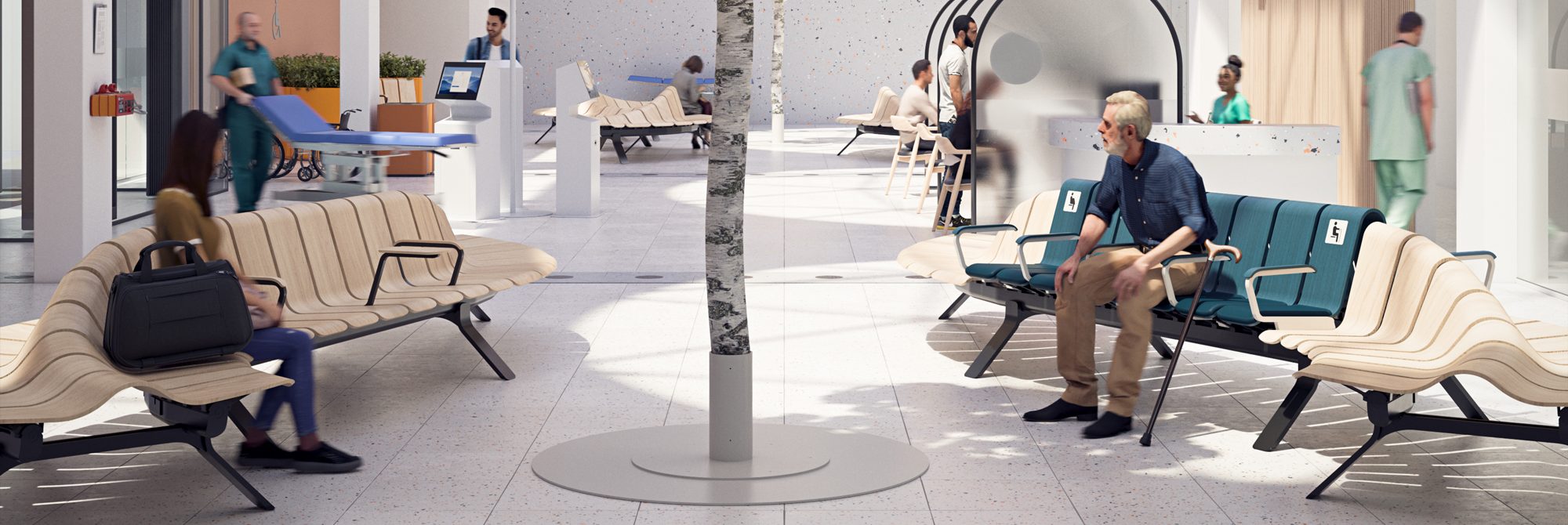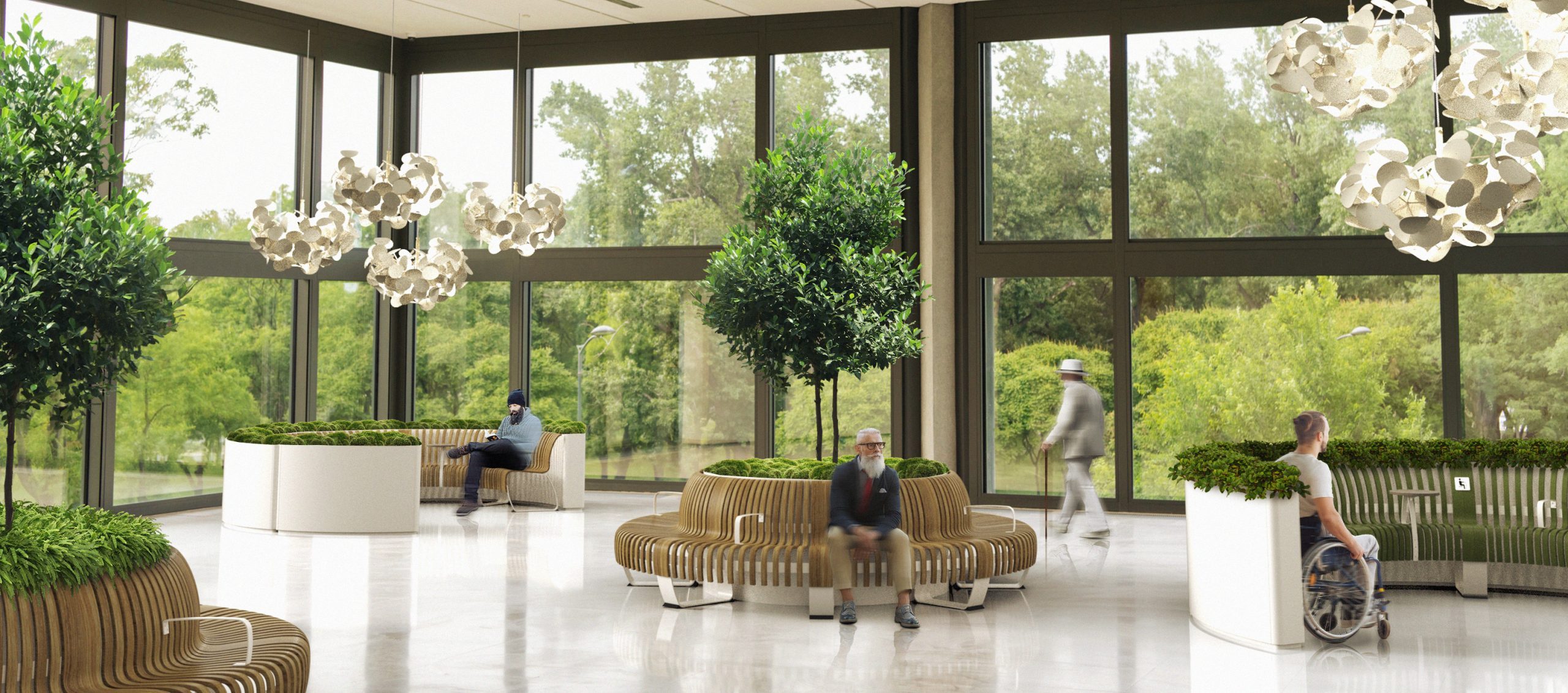Ascent seating series: responding to the unique requirements of healthcare waiting room seating
Visitors to hospitals often experience a lot of stress from the vulnerable situation they are in. By creating an atmosphere that is warm, welcoming and relaxed, we can have a positive influence on the overall experience and make the patients feel less stress, less anxiety and more taken care of. And what’s even better - the staff experience the same results, with a stronger sense of morale and better feel for their place of work
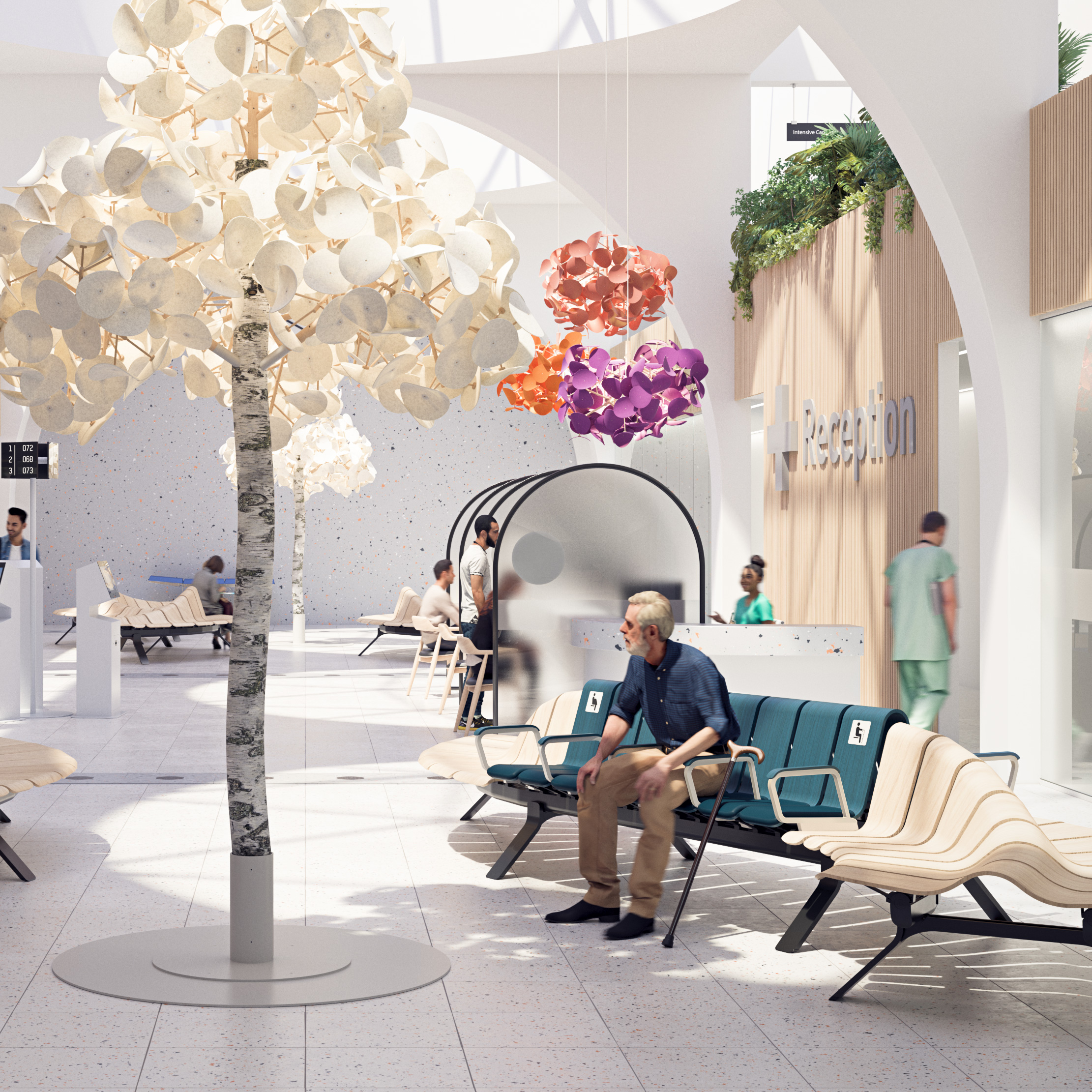
The challenges of hospital waiting rooms
At some point in our lives, we all need to visit a hospital or healthcare facility. And one of the most potentially stressful aspects of a hospital visit is the wait.
Typical waiting room environments look and feel cold, sparse, and sterile. Rows of identical linear waiting room seating are attached to a central beam facing the reception desk. Even modern minimalist and ergonomic designs offer little choice regarding how seats are used – patients can only talk seated side-by-side, without personal space for privacy. Seats are often placed without context or identity, with each waiting room looking much like any other.
There is little regard for the environmental impact on the body and mind of an ill, vulnerable, or anxious patient.
At Green, we believe that well-designed public furniture and its use can make all the difference to the experience of patients and their families – reducing stress, alleviating boredom, providing security and comfort for those in pain, and contributing to the well-being and good recovery rates.
We offer a practical and aesthetic waiting room seating solution to hospitals and their staff that meets the official requirements – working alongside architects and healthcare managers as a trusted design partner to find the right choices for each clinical setting.

The unique demands of healthcare waiting room seating
Public furniture in hospitals and other healthcare settings needs to be inclusive, accessible, and adaptable – considering the varying needs of patients and the unique demands of different healthcare spaces over time.
Visitors – not just the patients themselves, but also friends and family members accompanying them – may be anxious and vulnerable, and the need to be seen and acknowledged must be central to the interior design of waiting rooms [1]. But patients also need a choice in where they sit. Some want physical and emotional space to wait alone (without feeling squeezed in with other members of the public), while others want to be able to talk in family groups or with a partner [2]. Studies show that most people prefer to sit facing the window, looking at nature which contributes to the well-being and recovery of the patient.3.
Waiting room seating should also offer seamless experiences and promote positive distraction as a way of dealing with stress – allowing face-to-face communication, tables for personal possessions and refreshments, electrical points for technology, and armrests to make seats comfortable for reading and resting. [4]
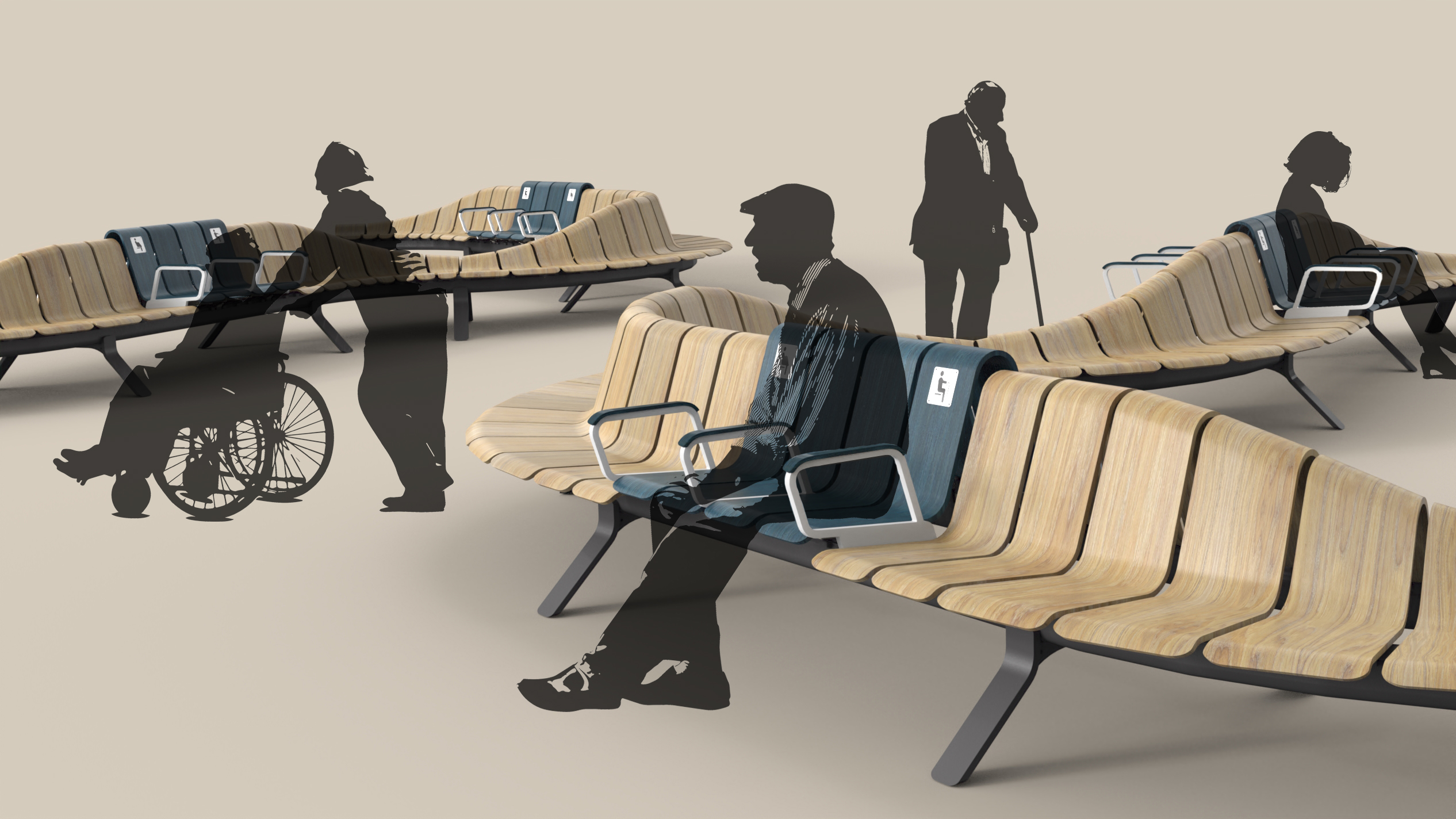
The Ascent series in a hospital setting
A modular waiting room seating is the perfect solution because it can be configured and adapted to different-sized waiting rooms and transitional spaces. It can be divided into smaller units or expanded, and it can be moved. The layout of a space can therefore be designed sensitively, with a choice of formations set apart or in groups, while ensuring that every patient is seen by hospital staff
Our award-winning Ascent modular beam series offers flexible, configurable waiting room seating with a host of extra qualities ideal for healthcare environments. Our in-house designers have the expertise to create the design you need for a layout that meets the requirements of healthcare professionals.
- A low profile makes it ideal for uninterrupted views across waiting rooms and patients’ feeling always seen.
- Curved and winding lines allow visitors to choose their seating angles and directions for a choice of views
- The modular system is easily taken apart and moved, with some shorter modules for small and transitional spaces
- Stackable and adaptable over time for changing use, increased/reduced traffic flow, or social distancing
- Durable for high traffic areas and easily cleaned and disinfected, while individual slats are replaceable, making it low maintenance and affordable
- Very few contact points with the floor and a long distance between contact points to maximise easy cleaning
- Designed for a circular economy. Materials are sustainable and recyclable, with replaceable components ensuring a longer lifespan.
- Ergonomically designed and comfortable for all body shapes and for those suffering pain or injury, even if they must wait for a long time
- Sturdy, stable, and accessible for those with mobility issues. Wooden seats are attached to a central aluminum beam
- The accessibility seating can be elevated with a choice to add a cushion, easy-to-read signage, and armrests
- Creates a sense of place with architect-designed organic, curvilinear shapes – convex and concave contours inspired by mountains and oceans
- Made primarily of wood, which is natural, warm, and tactile. A key aspect of biophilic design for wellbeing
- Perfect for defining zones and wayfinding. Can be colour-coded in different formations using woods and upholstery, offering a choice of smaller clusters or larger group seating
- A range of colours means the LRV (light reflective value) ratio between sections of seating and differently lit spaces can be controlled
- Add-ons such as electrical points with hidden cables, armrests, and tables for patients to occupy themselves while they wait, while seats are comfortable enough for resting.
- Back-to-back design encourages communication across the central beam, while units can be set out in a circular formation for sociable seating such as larger family groups
Are you currently working on a healthcare project and need some design help?
Our in-house designers have many years of experience and we offer you a free 3D floor plan rendering.
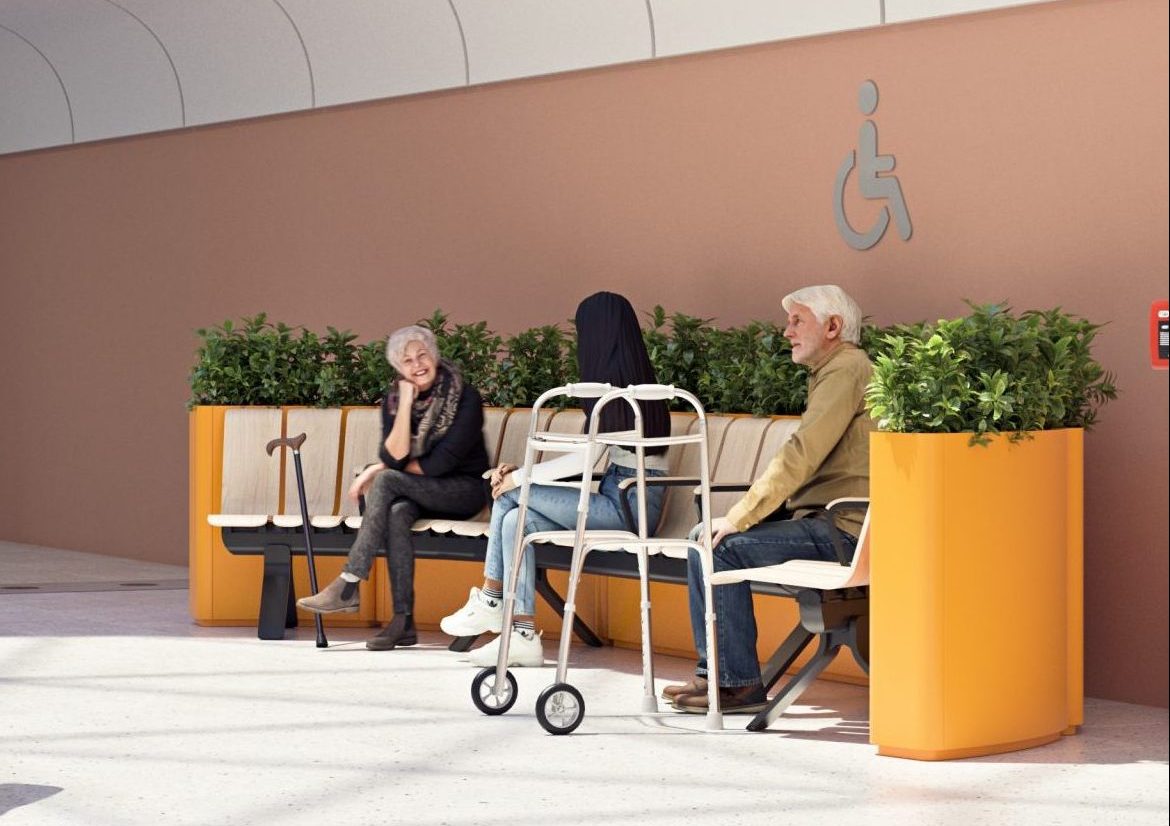
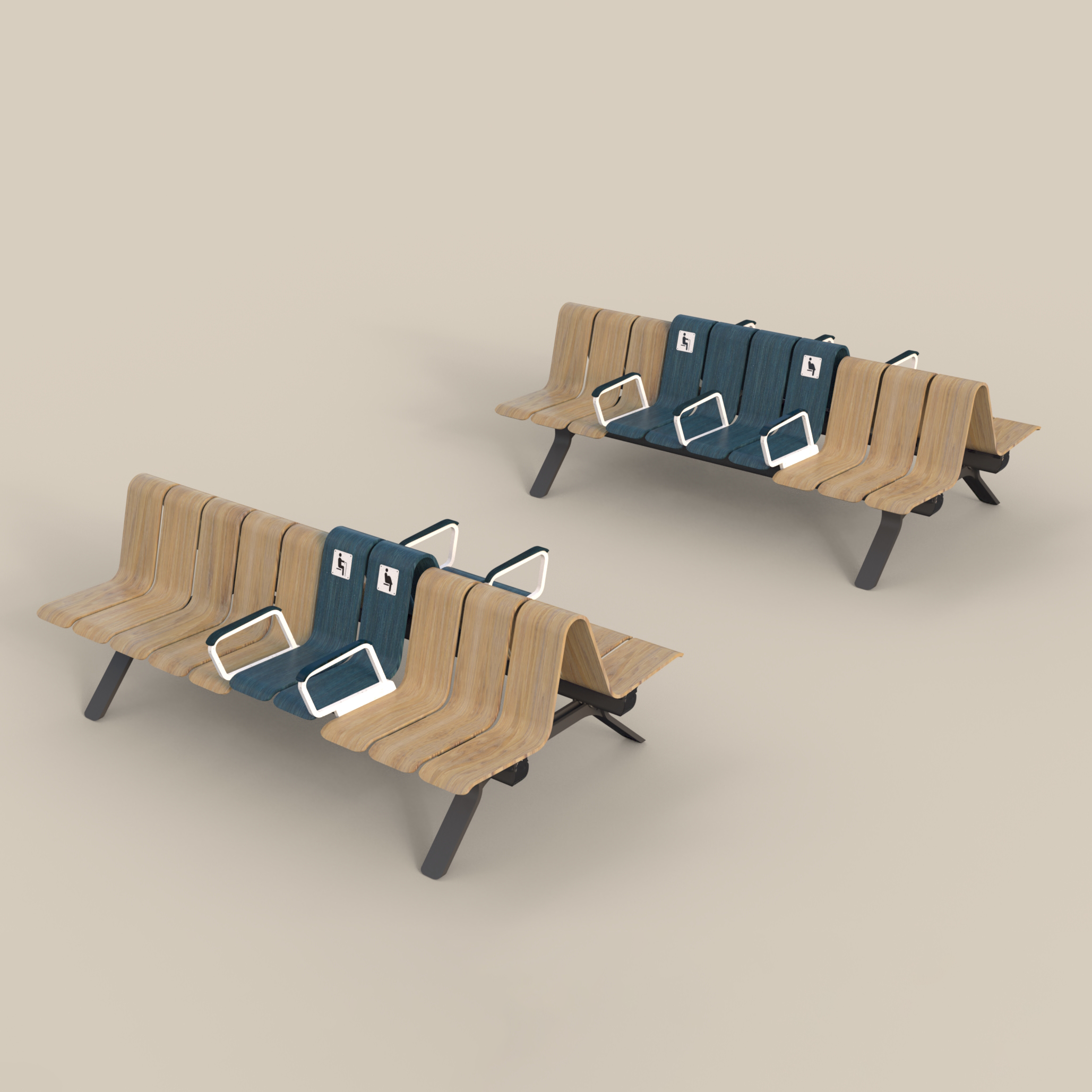
Official requirements in hospital furniture
At Green, we understand that hospital managers are bound by national and international standards and regulations governing the design and use of public furniture in clinical settings. If you are in this role, you need to be able to trust your furniture designer to meet these requirements. We work alongside you, ensuring you make the right choices for your space.
Furniture and all its parts must be easy to maintain, clean and disinfect, non-toxic and hypo-allergenic, designed for comfort, and ergonomically suited to all body shapes and support those living with pain or physical injury.
From a safety and well-being point of view, it is vital for both staff and visitors that patients can be seen across the space and always maintain a visual connection. This means that seat backs must be low enough not to obstruct views or create unintentional hiding places. The rise module Ascent allows you to create a nice design while making it possible to have low and high seat backs.
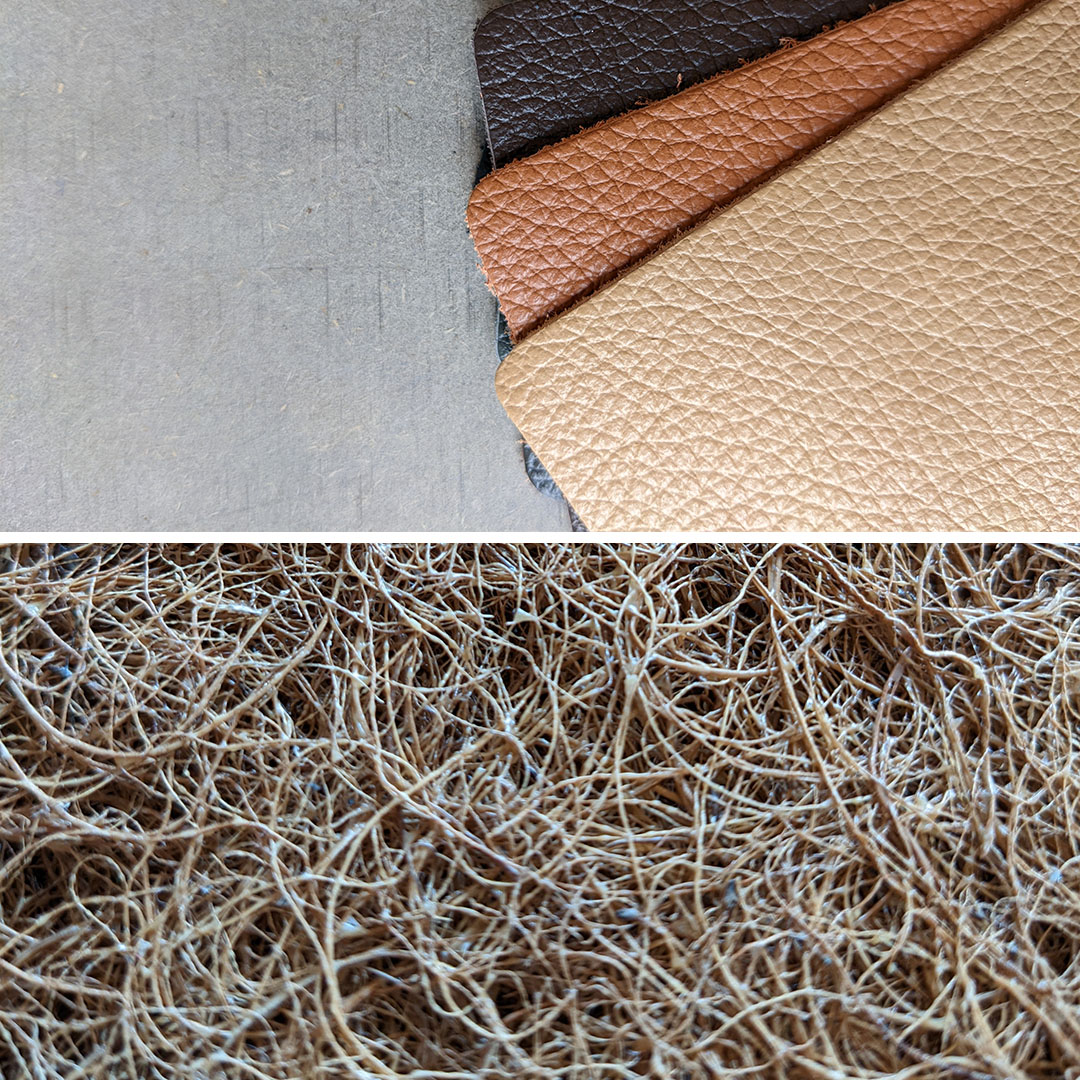
Materials and hygiene
Wooden furniture or wood with an aluminum beam structure has many advantages when used in healthcare settings. Wood is organic, warm, tactile, easy to clean, naturally antimicrobial, hypoallergenic, and non-toxic. When cleaned and disinfected, it dries quickly and is durable and resilient in high-traffic areas.
The standard wooden seats of the Ascent system are comfortable to sit on for most people. However, upholstered high-accessibility sections can also be added according to need. These are padded and covered with protected leather, and the whole cushion is easy to clip off for cleaning, making it more comfortable for those with disabilities, operations, chronic pain, or pregnancy.
Placemaking for wellbeing
Public furniture in healthcare means far more than patient comfort and safety, it is also a key component of placemaking.
Well-designed furniture in varying formations helps to create an identity and a sense of place, enhancing patient wellbeing through environmental stimulation and engagement while alleviating stress. [5][6]
Furniture isn’t merely functional – it has aesthetic and multi-sensory importance too, with the potential to improve the lived experience of hospital staff as well as patients. Waiting room seating and tables, along with other design features, are increasingly being thought of from a biophilic design perspective – adding organic materials, lines and shapes, while paying attention to greenery, acoustics, natural views, light and air quality to improve health outcomes and make the environment calm and pleasant to be in. [7]
Modular seating also has a role in creating zones and wayfinding – for example by marking out differently coloured seating areas for different doctors or departments. It can be used to control the flow of traffic, create safety boundaries, and mark transitional spaces from one zone to another [8]. As well as being configurable, it can easily be moved from one place to another as the needs of a particular space change over time, allowing healthcare environments to invest in aspirational design solutions long into the future.
Are you an architect, hospital manager or healthcare provider looking for an intelligent and compassionate solution to the challenges of waiting room seating design? To find out more about the Ascent system and how it could work in your space, please talk to us here
Share on LinkedIn

Book a presentation of the new Ascent healthcare solution
Want to know more about our Ascent healthcare solution? Book a meeting with Johan, founder and designer at Green.
![]()
We are making healthcare spaces matter

